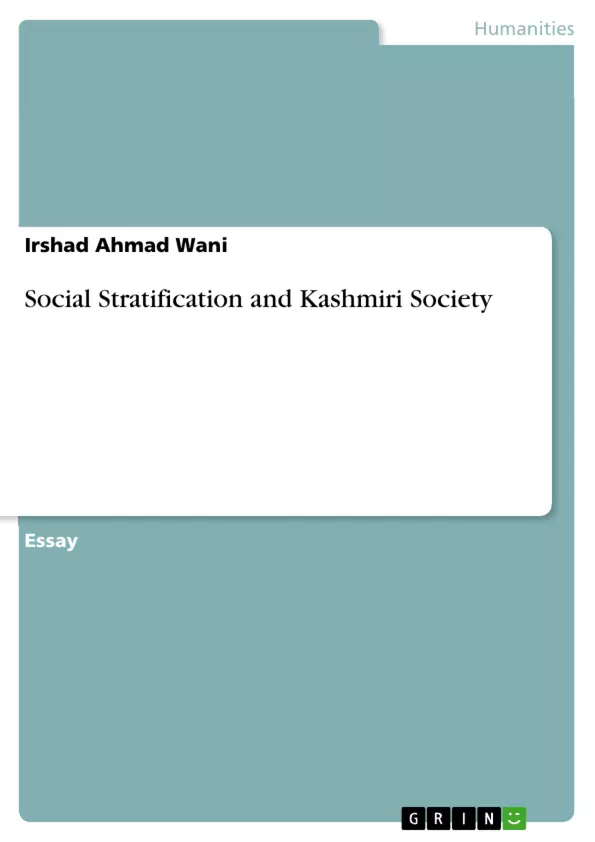This study is an attempt to study the broad patterns of social stratification prevailing in the district of Pulwama. As a complex social phenomenon, social stratification, which refers to the division of society into various hierarchical strata, is as old as human civilization. While many have talked about a „classless‟ society of either the past or the future, these ideas found very little support in historical experience. Though the phenomenon is common to all societies, its nature and forms vary from society to society, and from culture to culture.
Inhaltsverzeichnis (Table of Contents)
- Introduction
- Social Stratification & India
- Social Stratification & Kashmir
- Class Stratification
- Power Stratification
- Wrapping up the dialogue
Zielsetzung und Themenschwerpunkte (Objectives and Key Themes)
This study aims to investigate the patterns of social stratification prevalent in the Pulwama district of Kashmir. It explores the historical and contemporary dimensions of social inequality in Kashmiri society, highlighting the interplay of caste, class, and power in shaping social structures.
- Social stratification as a complex social phenomenon
- The influence of caste, class, and power in shaping social hierarchies
- The unique characteristics of social stratification in Kashmir
- Comparison of social stratification patterns in Kashmir and India
- The impact of historical and cultural factors on social stratification in Kashmir
Zusammenfassung der Kapitel (Chapter Summaries)
- Introduction: This chapter introduces the concept of social stratification and its significance in understanding social inequalities across different societies. It discusses the various forms of social stratification and their characteristics, including slavery, feudal estates, caste, and class systems.
- Social Stratification & India: This chapter delves into the extensive literature on social stratification in India, particularly focusing on the caste system. It examines the contributions of various sociologists and anthropologists who have studied the evolution and transformation of the caste system in India. The chapter also discusses the impact of social stratification on different communities in India, including Muslims.
- Social Stratification & Kashmir: This chapter explores the unique characteristics of social stratification in Kashmir, highlighting the differences between the caste system in India and the social hierarchy in Kashmir. It emphasizes the role of class and power in shaping social relations in Kashmiri society. This section explores the emergence of new social structures in Kashmiri society and how they interact with existing traditions and customs.
Schlüsselwörter (Keywords)
The key keywords and focus topics of this study include social stratification, inequality, Kashmir, caste, class, power, Indian society, Islam, and cultural evolution.
- Quote paper
- Irshad Ahmad Wani (Author), 2017, Social Stratification and Kashmiri Society, Munich, GRIN Verlag, https://www.grin.com/document/376930



